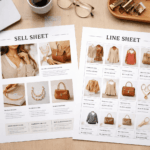
Pattern making is not merely a technical process; it’s an art form that marries creativity with meticulous calculation. It stands as the cornerstone of the fashion industry, dictating the fit, form, and function of every garment. Behind every elegant gown or tailored suit lies a carefully crafted own pattern, serving as the blueprint for its creation.
To master the craft of the sewing pattern is to wield a profound understanding of geometry, anatomy, and fabric behavior, infused with an artistic sensibility and an unwavering attention to detail.
This article embarks on an exploration of the intricate world of pattern making, tracing its historical roots, and techniques, and elucidating its significance in the realm of fashion design. From the fundamentals of pattern paper drafting to the intricacies of manipulation methods, we venture into the realm where precision reigns supreme and creativity knows no bounds.
The History of Basic Pattern Making
Pattern making, as an integral aspect of garment construction, boasts a rich and multifaceted history that spans centuries and continents. Basic pattern-making tools have evolved from rudimentary origins in ancient civilizations to a sophisticated state in the modern era, marked by ingenuity, innovation, and cultural exchange.
Ancient Origins
The origins of pattern making can be traced back to the dawn of civilization, where early humans fashioned rudimentary garments from animal hides and plant fibers to protect themselves from the elements. In these nascent stages, garments were often draped directly onto the body, with little emphasis on standardized own patterns or measurements. Instead, knowledge of garment construction was passed down orally from one generation to the next, with each culture developing its own techniques and traditions.
In ancient Egypt, people crafted intricate garments for religious ceremonies and burial rites, showcasing one of the earliest known examples of pattern making. Archaeological evidence suggests that Egyptian tailors utilized basic geometric shapes and measurements to create garments that fit the body snugly while allowing for ease of movement. Similarly, in Mesopotamia, skilled artisans employed techniques such as pleating and draping to fashion garments that reflected the social status and identity of the wearer.
Medieval Europe
Pattern making underwent significant advancements during the Middle Ages, as trade and commerce flourished across Europe. Skilled artisans known as tailors emerged as key figures in medieval society, responsible for crafting garments for nobility, clergy, and commoners alike. It was during this period that the first rudimentary templates, known as “blocks” or “slopers,” began to emerge, serving as basic blocks of patterns from which garments could be tailored to fit individual clients.
The Renaissance and the Age of Exploration
The Renaissance period witnessed a resurgence of interest in art, science, and culture, which profoundly influenced the practice of pattern making. Italian Renaissance artists such as Leonardo da Vinci and Albrecht Dürer made significant contributions to the study of human anatomy and proportion, providing pattern makers with valuable insights into the structure and dimensions of the human body.
Meanwhile, the Age of Exploration opened up new trade routes and cultural exchanges between Europe, Asia, and the Americas, leading to the introduction of exotic fabrics, techniques, and designs. Pattern makers eagerly embraced these newfound influences, incorporating elements of Eastern draping techniques, Native American beadwork, and African textiles into their repertoire.
The Industrial Revolution
The Industrial Revolution of the 18th and 19th centuries heralded a seismic shift in the garment industry, transforming basic pattern making tools from a cottage industry into a mechanized process. Innovations such as the sewing machine, standardized sizing systems, and mass production techniques revolutionized the way garments were manufactured, making them more affordable and accessible to the masses.

During this period, sewing pattern samples became increasingly standardized, with the emergence of pattern books and drafting systems that provided templates for a wide range of garments. Tailors and dressmakers no longer relied solely on their own measurements and expertise to draft patterns, but could refer to standardized patterns that ensured consistency and efficiency in production.
The Rise of Haute Couture
The early 20th century saw the rise of haute couture in Paris, with designers such as Charles Frederick Worth and Coco Chanel revolutionizing the fashion industry. Haute couture, or high fashion, emphasized custom-fitted garments made from luxurious fabrics and embellishments, elevating pattern making to an art form.
In haute couture ateliers, pattern making became a highly specialized craft, with skilled artisans known as “petit mains” meticulously crafting patterns and prototypes by hand. Tailors crafted these patterns to the exact measurements and specifications of individual clients, ensuring a perfect fit and exquisite craftsmanship.

Modern Innovations
In the modern era, pattern making continues to evolve with advancements in technology and globalization. Computer-aided design (CAD) software has revolutionized the way designers draft and manipulate own patterns, allowing them to create and modify patterns with precision and efficiency.
Additionally, the advent of 3D printing and digital modelling has opened up new possibilities for sewing pattern creation and making, allowing designers to create intricate and complex shapes that were previously difficult or impossible to achieve using traditional methods. These technologies are not only pushing the boundaries of creativity but also streamlining the production process and reducing waste.
The Basics of Sewing Pattern Making
Pattern and paper pattern making, at its essence, is the art of crafting templates or “patterns” that serve as blueprints for cutting and assembling fabric pieces into garments. The crux of successful pattern making lies in grasping the symbiotic relationship between the human form, the characteristics of the chosen fabric, and the aesthetic vision of the designer.
The initial step in the pattern making process involves taking meticulous body measurements, which serve as the cornerstone for crafting garments that fit impeccably. Pattern makers typically gather measurements at key points such as the bust, waist, hips, and inseam. These measurements furnish the pattern maker with the requisite data to devise a custom-fit pattern tailored to the wearer’s unique physique.

Following the measurement-taking phase, the own pattern maker proceeds to draft a basic template or “block” predicated on standardized sizing guidelines. This block pattern serves as the foundational canvas from which designers can birth an array of garment styles, subsequently tailoring and customizing them to align with individual design preferences.
Pattern Drafting and Draping
Pattern drafting techniques vary, depending on the style and intricacy of the garment being fashioned. Flat pattern drafting, the most prevalent method, entails crafting a two-dimensional template on paper or cardboard through a blend of mathematical calculations and design principles. This template then acts as the blueprint for cutting fabric pieces, and artisans subsequently sew them together to shape and materialize the final garment.
Draping represents another pivotal approach to pattern making, where artisans artfully drape fabric onto a dress form or mannequin to ascertain the desired silhouette. This method of pattern grading affords a degree of flexibility and spontaneity, allowing the designer to visually assess how the fabric drapes and conforms to the contours of the body.
In tandem with drafting and draping, pattern makers frequently employ manipulation techniques such as slashing, spreading, and pivoting to imbue garments with intricate design elements and nuanced shaping. These techniques necessitate a keen grasp of geometry and spatial relationships, coupled with a penchant for inventive problem-solving and innovative ideation of pattern blocks.
Advanced Pattern-Making Techniques
Beyond the rudimentary tenets of flat pattern making, drafting and draping lie a realm of advanced techniques that afford designers the latitude to push the boundaries of creativity and innovation. From elaborate geometric constructions to avant-garde sculptural forms, the landscape of pattern making brims with opportunities for experimentation and exploration.
One such advanced technique that has garnered widespread acclaim in contemporary fashion design circles is digital pattern making, which harnesses the prowess of CAD software to craft and manipulate patterns in a virtual milieu. Digital pattern making proffers a panoply of advantages over its analog counterparts, including heightened precision, expedited workflow, and enhanced ease of modification. Designers can swiftly iterate on designs, tinker with diverse shapes and proportions, and generate precise patterns amenable to mass production.
Concomitantly, another avant-garde technique gaining traction in the fashion sphere is 3D pattern making, which entails fabricating three-dimensional virtual models of garments through specialized software. By simulating fabric behavior and garment construction techniques, 3D patterns creating furnishes fashion designers with a visual conduit to envisage how a garment will look and comport on a virtual body prior to the commencement of physical fabrication. This not only accelerates the design process but also curtails waste and mitigates production costs.
In addition to digital and 3D methodologies, experimental pattern making modalities such as zero waste design and modular construction are challenging orthodox precepts of garment production pattern construction. Zero waste design endeavours to minimize fabric wastage by deploying innovative cutting techniques and pattern layouts that optimize fabric utilization. Analogously, modular construction entails fashioning garments from interchangeable modules or components, affording consumers greater customization options while advancing sustainability imperatives.
The Future of Pattern Making
As technological advancements burgeon and consumer predilections evolve, the horizon of patterns crafting brims with tantalizing prospects. From AI-driven design assistants to on-demand manufacturing platforms, the fashion landscape is undergoing a metamorphosis characterized by heightened efficiency, sustainability, and inclusivity.
One locus of innovation in pattern making resides in the development of AI-powered design tools that proffer designers with the wherewithal to generate and refine own patterns autonomously. These pattern development tools leverage machine learning algorithms to parse vast troves of data pertaining to body measurements, fabric attributes, and design aesthetics, facilitating the creation of bespoke patterns that conform impeccably to individual physiognomies.

Another emergent trend in pattern making is the infusion of sustainable materials and production methodologies into the design lexicon. Against a backdrop of mounting concerns regarding the ecological footprint of the fashion industry, designers are increasingly galvanized to mitigate waste, curtail carbon emissions, and promulgate ethical practices across the supply chain existing pattern make. From biodegradable textiles to closed-loop manufacturing systems, the pantheon of sustainable patterns creating holds manifold possibilities and promise.
Moreover, advancements in additive manufacturing technologies such as 3D printing are poised to revolutionize the manner in which garments are conceived and fabricated. By layering materials to engender three-dimensional objects directly from digital models, 3D printing engenders novel vistas for customization, complexity, and efficiency in pattern making. Designers can experiment with avant-garde textures flat patterns, structures, and configurations hitherto unattainable via traditional methodologies.
Conclusion
Pattern making transcends the realm of mere craftsmanship; it embodies an alchemy wherein technical acumen converges with artistic ingenuity to create patterns that engender garments that ensnare the senses and kindle the imagination. Whether executed through the venerable medium of hand-drawn drafts or harnessed through the matrix of digital technologies, the essence of basic pattern subsists in precision, innovation, and consummate craftsmanship.
As we cast our gaze towards the future of fashion design, crafting of patterns stands resolute as the linchpin that shapes the contours of our sartorial landscape. The art of creating patterns extends from haute couture confections to quotidian essentials. It ensures that every stitch carries intention, every seam is executed with exactitude, and every garment emerges as a testament to the mastery of the craft. Thus, the next time you slip into the embrace of your favorite garment, pause to pay homage to the intricate own patterns that adorn its fabric, for behind every garment lies a narrative of skill, creativity, and unwavering devotion to the art of pattern making.





Leave a Reply